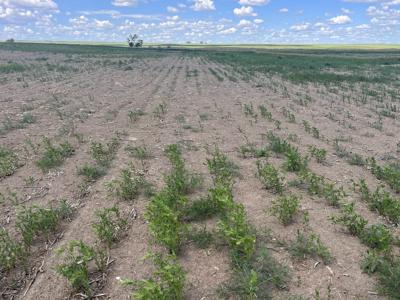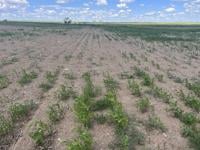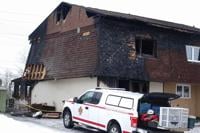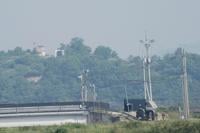REGINA - It's the ninth year in a row Quinton Jacksteit's farm has experienced drought.
The southwest Saskatchewan farmer, who also is the reeve for the Rural Municipality of Big Stick, says his crops are extremely short, and he plans to salvage most of them for animal feed.
"They're not going to be able to make much of a yield," he said in a recent interview from his home near Golden Prairie, east of the Saskatchewan-Alberta boundary.
"I'm going to scrape through and maybe be able to go another year, but I have a couple of boys that want to farm, and it's not something that I would recommend to them at this particular time."聽
Others are worse off, he added.
"It may be the end for them. That could be a three- or four-generation farm."
Agriculture and Agri-Food Canada's drought monitor shows swaths of the country have been anywhere from abnormally dry to extremely parched.
Trevor Hadwin, an agri-climate specialist with the department, said southwest Saskatchewan, near the Alberta boundary, has been severely depleted of moisture for eight years. This year, he said, pastures have dried up and ranchers are looking to buy extra hay they can't grow.
Some have also reduced their herds or moved cattle to green pastures.
"Sometimes, that's been 300, 400 kilometres away," Hadwen said.
"For crop producers, we're seeing a reduction in yield potential. Crops are maturing much more rapidly than you would hope and will not produce as much seed content."
Alberta's Peace River region in the northwest, as well as the province's southwest corner, are also arid, he added.
In Saskatchewan, Big Stick and neighbouring municipalities have declared states of emergency to spread awareness of the drought. Virginia Maier, the reeve of Enterprise, said her peas likely won't produce pods.
Nor does she expect her durum to grow without rain.
"Everything is short, everything is dying," Maier said. "When (drought) goes on for so many years, it's starting to get depressing."
She said costs for fertilizer and other inputs have been high while crop prices are low.聽
"I think we'll be OK, but there are others saying, 'Do I just get out and sell the land and rent it and just be done with it?'"
In the province's northern agricultural region, a dry spring is expected to cut hay yields by 50 per cent, said Christine Strube, who farms and ranches northwest of Prince Albert.聽
Strube said a recent decision by the province and Ottawa to allow farmers to sell their regular crops as animal feed without getting dinged on insurance will be helpful.聽
"The key thing now is that we just get some consistent rains throughout the summer," she said.
Jacksteit said additional changes to crop insurance are needed, including a per-acre payment or a program that would allow farmers to salvage seed without getting penalized on their coverage.
"We've just gotten into a state where expenses are climbing and at the same time, our insurance coverages have dropped to a point of where they no longer cover the cost of that farm," he said.
"We're not trying to be beggars or anything like that. We're just trying to make the government aware that our programs aren't working."
Saskatchewan's agriculture ministry, in a statement, said the province is willing to work with Ottawa to discuss how they can enhance insurance programs. It said there are options available for farmers who choose not to divert their crops to feed.
Hadwen said the summer weather outlook is not favourable for drought-ridden regions.聽
"There's still a little bit of time to recover for some areas, but other areas are probably in for it for the summer," he said.
Environment and Climate Change Canada's forecast predicts a warmer-than-usual summer with uncertain precipitation levels. Bill Merryfield, a research scientist with the weather office, recently said human pollution has been a key influence on hotter summers.
Tinder dry conditions have also created the fuel needed to start hundreds of wildfires across the country, forcing thousands in Manitoba and Saskatchewan to flee their communities earlier this spring.
As of Friday, Manitoba has reported 60 active wildfires, with residents of Lynn Lake now being told they'll have to evacuate for a second time. Saskatchewan has reported 65 active fires, with five communities under evacuation.
Don Connick, who farms near Gull Lake in southwest Saskatchewan, said long-term planning is needed to deal with persistent drought.
A director with the Agricultural Producers Association of Saskatchewan, Connick said farmers should consider changing how they graze cattle and create a network to supply hay to those in short supply.
More research and water retention ponds also are needed, he added.
"(Drought) is happening year after year after year," he said. "Crop insurance has been very helpful in this, but again, they have limitations as to what they can do."
This report by 春色直播was first published July 6, 2025.







































